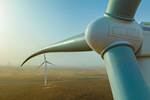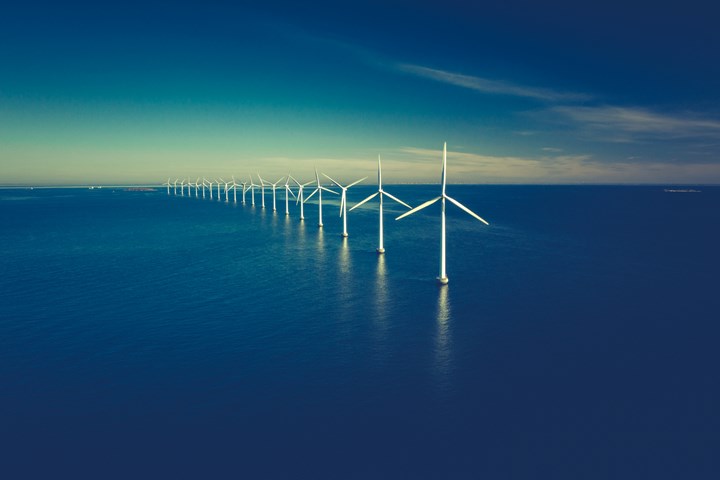Vestas unveils circularity solution to end landfill for turbine blades
A novel chemical process, developed within the CETEC initiative with partners Olin and Stena Recycling, is capable of breaking down epoxy resin to virgin-grade material.
Vestas Wind Systems A/S (Aarhus, Denmark) is presenting a new solution that renders epoxy-based wind turbine blades as circular, without the need for changing the design or composition of the blade material. Combining newly discovered chemical technology developed within the CETEC initiative, and partnerships with Olin (Clayton, Mo., U.S.) and Stena Recycling (Frogner, Norway), the solution can be applied to blades currently in operation. Once matured, Vestas says this will eliminate the need for blade redesign, or landfill disposal of epoxy-based blades when they are decommissioned.
“Until now, the wind industry has believed that turbine blade material calls for a new approach to design and manufacture to be either recyclable, or beyond this, circular, at end of life,” Lisa Ekstrand, vice president and head of sustainability at Vestas, says. “Going forward, we can now view old epoxy-based blades as a source of raw material. Once this new technology is implemented at scale, legacy blade material currently sitting in landfill, as well as blade material in active wind farms, can be disassembled, and reused. This signals a new era for the wind industry, and accelerates our journey towards achieving circularity.”
Turbine blades have previously been challenging to recycle due to the chemical properties of epoxy resin, a resilient substance that was believed to be impossible to break down into reusable components. This has led to many technology leaders attempting to replace or modify epoxy resin with alternatives that can be more easily treated. Vestas’ solution is enabled by a novel chemical process that can chemically break down epoxy resin into virgin-grade materials. The chemical process was developed in collaboration with Aarhus University (Denmark), Danish Technological Institute (Taastrup) and Olin the partners of the CETEC project, a coalition of industry and academia established to investigate circular technology for turbine blades.
“The newly discovered chemical process shows that epoxy-based turbine blades, whether in operation or sitting in landfill, can be turned into a source of raw material to potentially build new turbine blades,” Mie Elholm Birkbak, specialist, innovation and concepts at Vestas, adds. “As the chemical process relies on widely available chemicals, it is highly compatible for industrialization, and can therefore be scaled up quickly.”
WindEurope expects around 25,000 tonnes of blades to reach the end of their operational life annually by 2025.
Through a newly established value chain, supported by Nordic recycling company Stena Recycling and global epoxy manufacturer Olin, Vestas will now focus on scaling up the novel chemical disassembly process into a commercial solution. Once mature, the solution will signal the beginning of a circular economy for all existing, and future epoxy-based turbine blades.
For several decades, producing wind turbine blades manufactured with epoxy-based resin has been standard practice in the wind industry. In the most mature markets for wind energy, the first turbines are reaching the end of their operational life and this will increase over the coming years.
In addition, the new solution will provide Vestas with the opportunity to produce new turbine blades made from reused blade material. In the future, the new solution also signals the possibility to make all epoxy-based composite material a source of raw material for a broader circular economy, potentially encompassing industries beyond wind energy.
Related Content
Materials & Processes: Fibers for composites
The structural properties of composite materials are derived primarily from the fiber reinforcement. Fiber types, their manufacture, their uses and the end-market applications in which they find most use are described.
Read MoreCarbon fiber in pressure vessels for hydrogen
The emerging H2 economy drives tank development for aircraft, ships and gas transport.
Read MoreNovel dry tape for liquid molded composites
MTorres seeks to enable next-gen aircraft and open new markets for composites with low-cost, high-permeability tapes and versatile, high-speed production lines.
Read MoreMoving toward next-generation wind blade recycling
Suppliers, fabricators and OEMs across the composite wind blade supply chain ramp up existing technologies, develop better reclamation methods and design more recyclable wind blades.
Read MoreRead Next
Swancor, Siemens Gamesa collaborate on advancing recyclable wind blade technologies
Through Swancor’s recyclable thermosetting resin technologies, the recyclable resin and composites can be reused, assisting Siemens Gamesa in moving towards its goal of providing fully recyclable wind turbines in Taiwan.
Read MoreContinuum targets facility capacity, transforms composite materials to advance wind blade recycling
The Denmark company details a CO2-neutral transformation technology to make 100% recyclable wind blades, plans to build six recycling facilities.
Read MoreCW’s 2024 Top Shops survey offers new approach to benchmarking
Respondents that complete the survey by April 30, 2024, have the chance to be recognized as an honoree.
Read More



















.jpg;maxWidth=300;quality=90)







